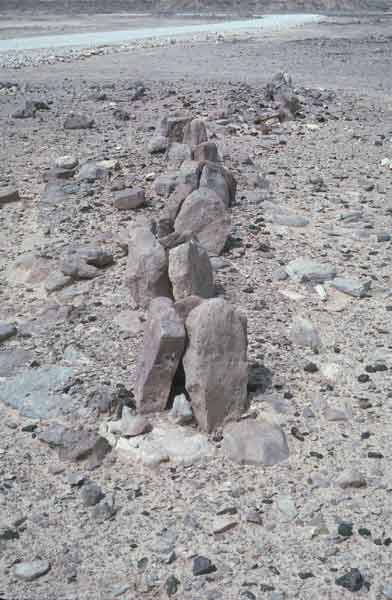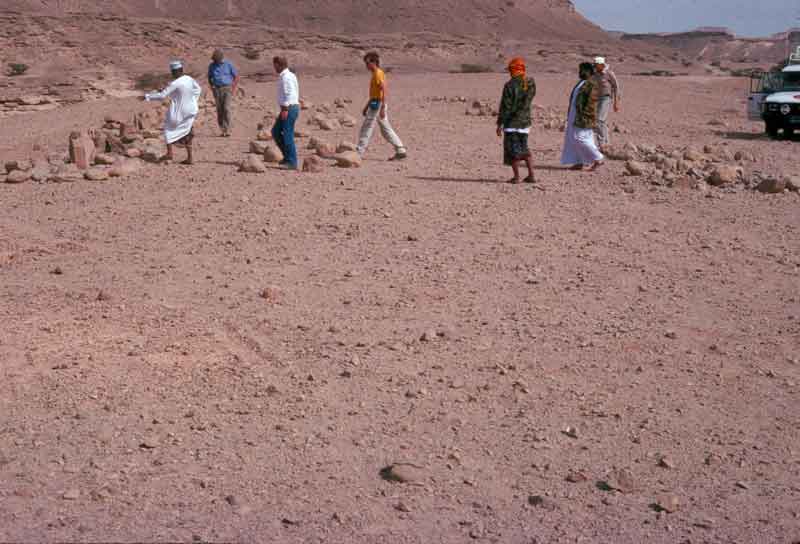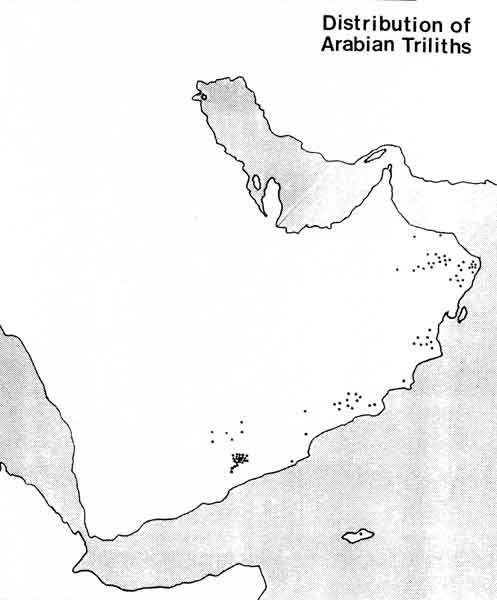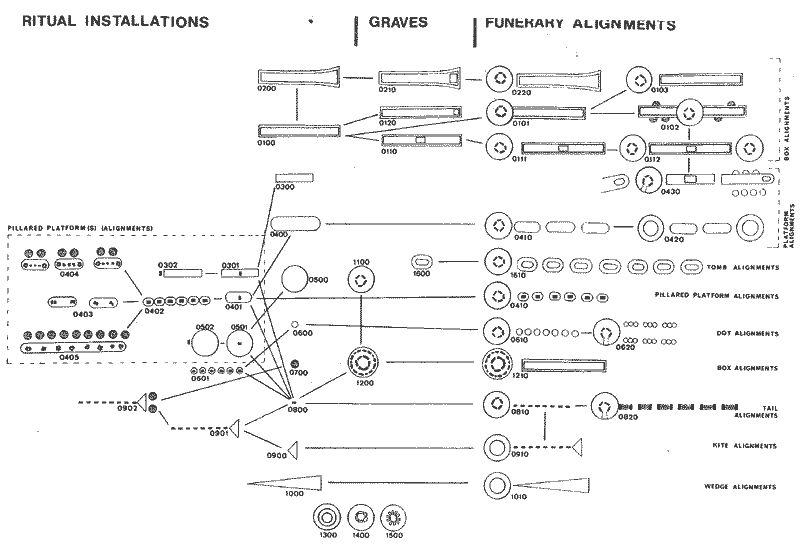The Archaeology Fund
Triliths
|
Already by the late nineteenth century, Western explorers such as the Bents had noticed in South Central Arabia the strange stone monuments which became known as triliths Canon 080902, 100-0001, 100-0004]. These stone rows subsequently became reported from Northern Oman to Socotra. What were they and what did they represent ? Detailed mapping and observations soon established the fact that the stone rows had more than one component. The basic three stones which made up the "trilith" were set in a stone ellipse [DH2-047] and the number of trilith stones per ellipse varied from a low of three to a high of nine. The entire ellipse with triliths was then packed solid with pebbles. The number of trilith ellipses per row also varies. In some cases, only one or two ellipses can be seen but in other cases we have mapped over twenty such ellipses in rows stretching for over 500 m. Observation of these rows also confirmed that they were also associated with adjoining small rectangles whose corners were defined by small boulders [DH2-046]. Finally, in every case, the trilith rows were accompanied by carefully constructed small stone firepit circles filled with pebbles and ash [Olympus 081002, 1010019, 101026]. On occasion other small structures perhaps houses, can be seen near the rows, as well as pecked rock art on patinated boulders DH2-043]. Absolute dates derived from the ash of the fireplaces has placed the trilith rows within the Iron Age and more specifically within the period 400 B.C. - 300 A.D. The geographical distribution of such trilith rows is concentrated in eastern Yemen and western southern Oman although the spillover effect has taken examples considerably outside the this range. One could be tempted to suggest they have something to do with local populations (see MSAL) of the Iron Age [DH2-054] or the production and trade on incense. In most cases, these rows are to be found on intermediate wadi terraces stretched out parallel to them [Bronze Age Yemen scan 34.jpg]. Did they signify route markers?, territorial boundaries?, water sources? [Olympus 081002 1010023] Or something entirely different? According to local information, these trilith rows were constructed to play a part in long-forgotten rituals. On occasion, early alphabetic script inscriptions have been carved on some of the triliths and even placed on a fourth stone set on top of the triliths. Some archaeologists have suggested that the triliths represent a late period funerary rite evolved from much earlier stone rows and pillars of the Bronze Age (see above) [DH 0-44]. |
|




